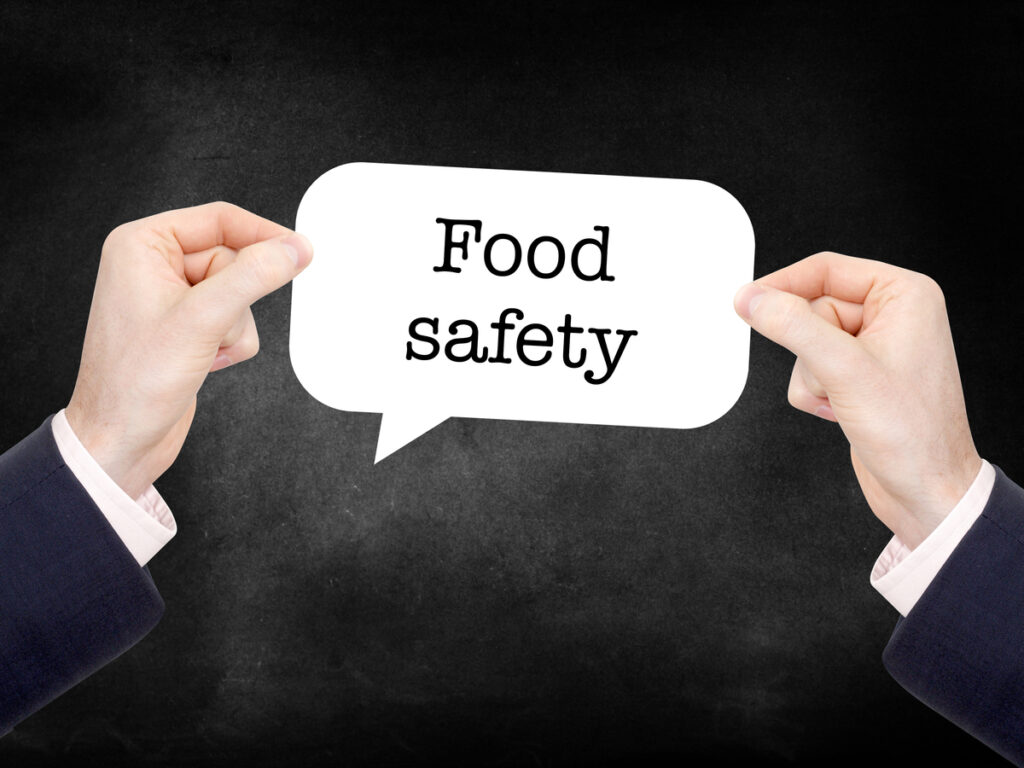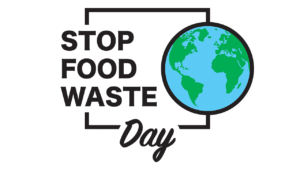We all need to eat. However, we rely heavily on the agricultural and food service sectors to ensure that the products we put into our bodies are safe to eat. If they’re not safe, they shouldn’t be called food. Food safety is currently a hot topic. Netflix recently released a documentary entitled “Poisoned: The Dirty Truth About Your Food.” The documentary is based on a book by best-selling author Jeff Benedict. Writer Ingrid Ostby reports, “The documentary unwraps the stomach-churning flaws in America’s food industry.”[1] She explains, “As you stroll the aisles of your local grocery store, you might contemplate buying romaine, precut cantaloupe, that ‘safe-to-eat’ tub of cookie dough, Lucky Charms, some chicken breast. Yet all of these foods — and, disturbingly, many more — can carry contaminates that make us sick. Unfortunately, things like E. coli, salmonella, and toxic waste simply aren’t listed on the label of ground beef chuck.” She then asks the question that all consumers should be asking, “While the US suffers through these outbreaks each week (up to 36 every seven days, affecting 48 million people a year), are the food and agricultural industries taking accountability for their mistakes?” Accountability is important; however, a more important question is: What can be done to better ensure the safety of the food we eat?
Food Safety: A Continuing Problem
Angela Fernandez, Vice President of Community Engagement at GS1-U.S., reports, “Food and beverage recalls reached the highest single-quarter in 2023 for four years. This is a concerning statistic on its own — and that’s aside from the alarming fact that the number of units impacted by recalls hit a 10-year high in 2022.”[2] She continues, “Today’s onslaught of food contamination — from Hepatitis A in frozen fruit to listeria in charcuterie meat — are making consumers question the safety of our food system. Business leaders and everyday shoppers alike are wondering what, if anything, is being done to ensure the safety of our food supply chain.” It should be pointed out that food safety is not just an American challenge. Academics from the University of Malta report, “Food safety is a major concern around the world. WHO estimates that each year worldwide unsafe food causes 600 million cases of foodborne diseases and 420,000 deaths of which 30% are children under 5 years of age. Food safety therefore remains a top priority for consumers and legislators.”[3]
Those are staggering numbers — and consumers are starting to take notice. The staff at Food Safety News reports that a study from the Mars Global Food Safety Center (GFSC), which, at the height of the pandemic, surveyed people in the United States, United Kingdom and China, “found 77 percent of people [believed] food safety is a top 10 worldwide problem.”[4] Other findings from the survey included:
• “Sixty percent of those surveyed raised concern about keeping food safe from toxins, as well as bacteria, and 58 percent are worried about preventing food fraud.”
• “People also expressed the importance for government and private organizations to continue to focus on preventing food safety issues (85 percent), to invest in early detection programs (84 percent) and to manage global food safety (80 percent).”
• “Almost three quarters of consumers are willing to place their trust in food regulatory agencies, country governments (65 percent) and international governing bodies (61 percent) to ensure food safety but most agree more needs to be done.”
What Can Be Done?
One thing the Netflix documentary stresses is that reliance on self-policing by food and agricultural sectors is not working. Fernandez reports that the U.S. Food and Drug Administration (FDA) has recently issued regulations in hopes of improving food safety. She writes, “In January 2023, [the FDA] restructured the Human Foods Program, hoping that streamlining processes, strengthening oversight, and improving communication would enable the organization to respond faster to emerging risks and recalls. Additionally, in November 2022, the agency issued its new Food Traceability Rule under section 204 of the Food Safety Modernization Act (FSMA), to enhance supply chain traceability of high-risk foods as indicated on the Food Traceability List (FTL). … Now, anyone who handles foods on the FTL must capture and maintain records for certain critical tracking events (CTEs) with key data elements (KDEs). These products must have a traceability lot code, location information, and product dates for specific events along the supply chain, to name just a few requirements. All stakeholders must maintain these records for two years and, in the event of an investigation/recall, be able to provide records to the FDA in a sortable spreadsheet (at a minimum) within 24 hours.”
Unfortunately, Fernandez reports these pivotal changes won’t go into effect until January 2026. When they do go into effect, they should “enhance the safety of our global food supply by addressing critical gaps in supply chain visibility, enhancing information-sharing among key stakeholders, and enabling faster removal of harmful products from the market.” In a more recent announcement, the FDA established a new role — Deputy Commissioner for Human Foods — whose role is to focus “on keeping the foods [the FDA] regulates safe and nutritious, while ensuring the agency remains on the cutting edge of the latest advancements in food science and nutrition.”[5] The staff at CIO Review believes that the introduction of better technology can also help improve food safety. They write, “In order to avoid being shut down or targeted by consumer outrage, companies need to understand the importance of focusing on food safety software implementation in the three major areas of the supply chain.”[6] Those areas are:
• Neat Production Surrounding. “Unless the farmers and manufacturers rigorously manage their processing facilities, the risk of toxins impacting food products can be severely high. … By gaining a comprehensive insight into the functionality of food safety programs in their processing environments, manufacturers can combat the outcomes.”
• Leveraging Automation. “Manual processes increase the rate of human errors and … restrict the speed [of identifying and reacting] to problems. … To overcome the obstacles, companies need to implement a data-driven approach.”
• Data for Detection. “Food safety should be broad and continuous, providing essential automation to push actions to users by activating alerts in case the performance data reveals noncompliance.”
Concluding Thoughts
Although the Netflix documentary discusses specific cases in which manufacturers have deliberately ignored the risk their products presented to the public, the vast majority of growers, processers, and sellers are legitimately concerned about food safety. Admittedly, their concerns aren’t purely altruistic. The staff at ESHA Research reports, “The financial impact of food recalls can be massive. Depending on the size, scope, and cause of the recall, and your brand’s reaction, your organization could be paying upwards of $10 million in costs — perhaps even more for larger, high-profile recalls.”[7] In some cases, monetary losses may be overshadowed by reputational losses. The bottom line is that ensuring food safety is in everyone’s best interests and underscores the fact: If it isn’t safe, it’s not food.
Footnotes
[1] Ingrid Ostby, “‘Poisoned: The Dirty Truth About Your Food’: Everything You Need to Know,” Netflix Tudum, 16 August 2023.
[2] Angela Fernandez, “From Awareness to Action: The Battle for Safer Food in an Era of Rising Recalls,” SupplyChainBrain, 17 August 2023.
[3] University of Malta, “Plan for globally safer food,” EurekAlert!, 22 March 2021.
[4] Staff, “Half of consumers believe food safety is one of main global issues,” Food Safety News, 18 October 2020.
[5] Christopher Doering, “FDA names former environmental official as top food regulator,” Food Dive, 23 August 2023.
[6] Staff, “How to Prevent Food Recalls,” CIO Review, 18 July 2019.
[7] Staff, “The Price of Safety: Understanding the True Cost of a Food Recall,” ESHA Research, 24 February 2023.





